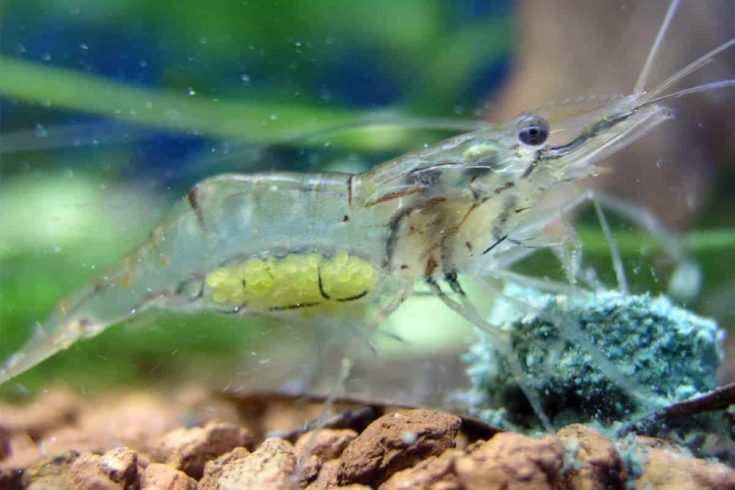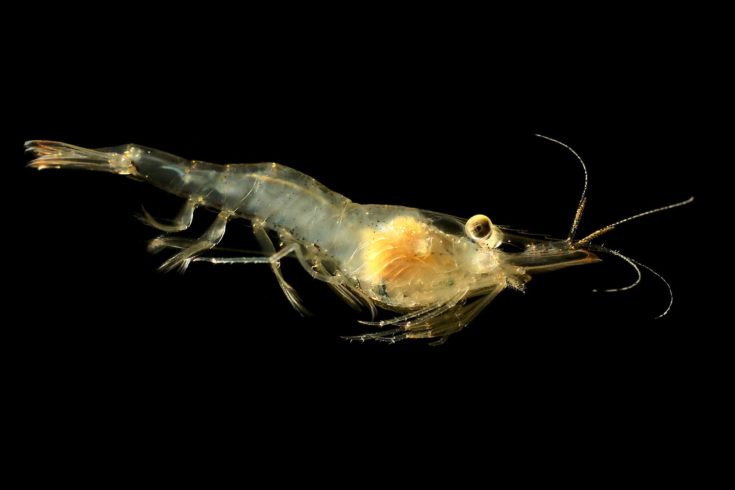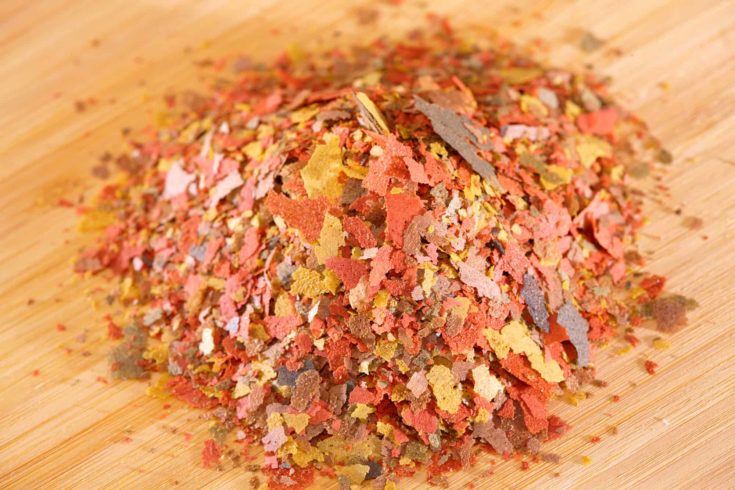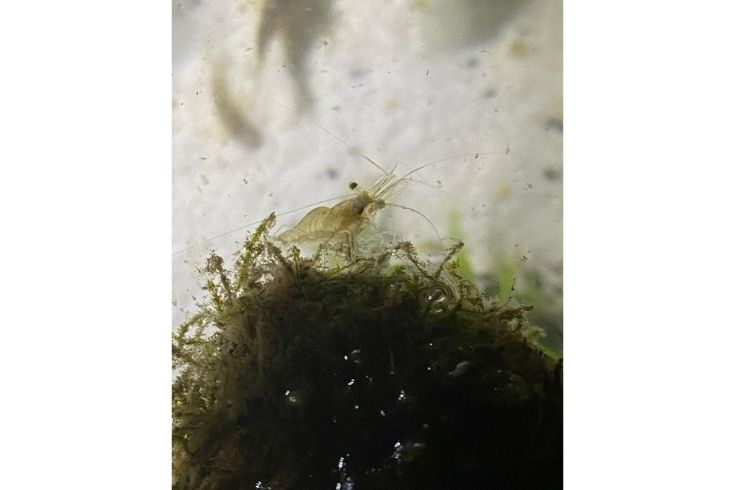Freshwater shrimp make fabulous pets for many fishkeepers because they are beautiful, entertaining pets that also do a great job keeping your tank clean. Whisker shrimp and ghost shrimp are two of the most popular varieties in the hobby.
Because they both have transparent bodies, the two shrimps can be difficult to tell apart. However, it is important to understand these differences so that you choose the right shrimp for your tank.
If you were looking to understand the differences between a whisker shrimp vs. ghost shrimp, you’ve come to the right place!
What’s The Difference Between Whisker Shrimp VS. Ghost Shrimp?
The key difference between a whisker shrimp vs. ghost shrimp lies in the appearance of their antennae. Whisker shrimp have longer feelers compared to the ghost shrimp, while the ghost shrimp has distinctive orange bands at the base of their shorter antennae.
Whisker shrimp are also slightly bigger compared to the ghost shrimp, and tend to be aggressive. Meanwhile, ghost shrimp are smaller and have peaceful temperaments.
Comparison Of Whisker Shrimp VS. Ghost Shrimp
Whisker shrimp and ghost shrimp may look alike, but there are a few ways to tell them apart. Here are the key differences between the two:
Comparison Table
Whisker Shrimp

Size
Bigger – can grow up to 2 inches
Appearance
Longer feelers (antennae) compared to ghost shrimp.
No orange bands on the base of legs and antennae.
Has a transparent body.
Cost
More expensive – costs up to $6 per shrimp
Temperament
Aggressive
Algae eating capability
Eats algae, but less effectively compared to ghost shrimp
Maintenance
Easy
Ghost Shrimp

Size
Slightly smaller – grows up to 1.5 inches
Appearance
Shorter feelers compared to whisker shrimp.
Orange bands at the base of legs and antennae.
Has a transparent body.
Cost
Slightly cheaper – each shrimp costs about $3
Temperament
Peaceful
Algae eating capability
Better at eating algae than the whisker shrimp
Maintenance
Easy
- Whisker shrimp are larger and can grow up to 2 inches in length. Meanwhile, the ghost shrimp only measures 1.5 inches at their maximum size.
- Whisker shrimp have longer feelers compared to ghost shrimp – they’re called whisker shrimp after all!
- Ghost shrimp have orange bands at the base of their legs and antennae. Whisker shrimp do not.
- Ghost shrimp are peaceful creatures that won’t hurt their tankmates. In contrast, whisker shrimp have ravenous appetites that may compel them to eat smaller fish and shrimp.
- Whisker shrimp cost about twice as much as ghost shrimp.
- Ghost shrimp are better at eating algae compared to whisker shrimp.
Whisker Shrimp
Scientific Name: Macrobrachium lamarrei
Minimum Tank Size: 10 gallons
Lifespan: Up to 2 years
Diet: Omnivorous
Visually striking with its see-through body, the whisker shrimp is a popular choice for many hobbyists. Like most freshwater shrimp, it does an excellent job at keeping your tank clean as it eats algae and frequently forages for uneaten food at the bottom of the tank.
Read on to learn more about these interesting underwater creatures!
Behavior
Freshwater shrimp have a reputation for being docile and friendly but be warned – the whisker shrimp bucks that trend. These shrimp are known for their ravenous appetites and will eat any tankmate that’s small enough to fit in its mouths, such as smaller fish and crustaceans.

To keep their aggressive tendencies at bay, be sure to keep these ravenous eaters well-fed with a variety of good-quality protein sources and flake foods. Well-fed whisker shrimp are less likely to make a meal out of their tankmates!
You should also give whisker shrimps lots of space if you intend to house them in community settings. The goal is to allow your shrimp to carve a territory for itself, making it less likely to attack its tankmates. We recommend a community tank size of at least 20 gallons.
Tankmates
Whisker shrimp are voracious eaters and can pose a threat to smaller tankmates. As such, it is important to be thoughtful in selecting tankmates for your shrimp.
Avoid housing whisker shrimp with smaller fish, crustaceans, and snails. This applies to other species within the shrimp family – whisker shrimp will leave each other alone, but may still prey on other species of freshwater shrimp.
Because whisker shrimp are relatively small, they are at risk of being eaten by larger fish. So these are another category of tankmates you want to avoid. Larger fish with docile temperaments ought to be fine, but more aggressive fish may decide to make a meal out of your shrimp.
In general, tank mates that are mid-to-upper dwelling will make a good match for your whisker shrimp. Be sure to keep a close eye on interactions between the creatures living in your tank!
Water Parameter Ranges
Temperature:
Between 72 and 82° F
pH:
Between 7.0 and 7.8.
GH (General Hardness):
2 – 14
KH (Carbonate Hardness):
1 – 8
TDS (Total Dissolved Solids):
100 – 300
Whisker Shrimp originate from Nepal and prefer water parameters that resemble their natural habitat.
Though whisker shrimp are generally easy to care for, they require an environment that is clean and well-maintained. Test your water regularly for ammonia and nitrite levels, and be sure to conduct regular water changes.
Ghost Shrimp

Scientific Name: Palaemonetes paludosus
Minimum Tank Size: 5 gallons
Lifespan: 1 year
Diet: Omnivorous
Much like the whisker shrimp, the ghost shrimp is highly popular among novices and amateurs alike because it is a low-maintenance pet that does an excellent job at keeping the tank clean. True to its name, it has a transparent body, with its guts clearly visible. Its visual appeal is hard to beat!
Let’s take a closer look at these see-through crustaceans:
Behavior
The ghost shrimp’s diminutive size belies its voracious appetite for algae. Widely known to be prolific scavengers, these tiny critters will work day and night to keep your tank clean and algae-free. The ghost shrimp’s algae-eating prowess even outstrips that of its similar-looking but larger counterpart, the whisker shrimp!
Ghost shrimp are also peaceful bottom-dwellers that will do well in a tank full of smaller fish. Because they are small and docile, they may be preyed upon by larger fish, so tank mate selection should be done thoughtfully. These shrimp would also be perfectly content in a species-specific tank, or even a solo tank!
Hobbyists intending to breed their shrimp also frequently opt for the ghost shrimp as they are known for being easy to breed. This is why they are often used as feeder food for large fish, though shrimp used as food typically have a weaker lineage.
With its peaceful disposition, tank-cleaning prowess, and ease of breeding, you really can’t go wrong with the ghost shrimp!
Water Parameters
Temperature:
Between 65 and 82° F
pH:
Between 7.0 and 8.0
GH (General Hardness):
3 – 15
KH (Carbonate Hardness):
3 – 12
TDS (Total Dissolved Solids):
100 – 400
Ghost shrimp are an unfussy bunch when it comes to water parameters and can easily adjust to most tropical conditions – as long as these conditions remain consistent.
In the wild, ghost shrimp live in areas with a gentle water flow. They also enjoy areas of dense vegetation and crevices, which they use as hiding spots. At home, these conditions are best replicated by creating a planted tank with a suitable type of substrate. Doing so will allow your ghost shrimp to thrive in their new home!
Tankmates
Ghost shrimp are a peaceful species that will get along well with small fish that share their temperament. These include:
- Tetras
- Danios
- Small, peaceful loaches such as the kuhli loach
- Corydoras catfish
In addition, most freshwater shrimp are peaceful and will make good tank mates. Snails are yet another option you could consider.
A general rule of thumb is to avoid fish that are larger than the ghost shrimp, as well as those with aggressive personalities. Doing so will keep your pet shrimp from becoming bait!
Standout Features
Temperament
If you’re looking for a peaceful shrimp that won’t hurt its tankmates, opt for the ghost shrimp. Meanwhile, the whisker shrimp is perfect if you’re looking to create a species-specific tank or a large community tank with lots of space.
Appearance
Both shrimp are visually striking with their see-through bodies and visible digestive tracts. However, the whisker shrimp is slightly larger compared to the ghost shrimp and has longer feelers. Meanwhile, ghost shrimp have orange bands at the base of their whiskers and legs.
Ease Of Care
Both shrimp are fairly low maintenance and easy to care for. They tolerate a fairly wide range of water temperatures and pH values. Consistency is key, as long as you stay within the recommended water parameters for both types of shrimp.
Cost
Whisker shrimp cost approximately twice as much as ghost shrimp. However, whisker shrimp also live up to two years, while ghost shrimp die within a year. Do weigh these factors against each other in making your final decision!
Conclusion
Did this article make you want to head to your nearest pet store and get a see-through shrimp for yourself? If so, we’re glad to have been of service! Do be sure to share this article with someone else who might enjoy it.
Generally speaking, we recommend the ghost shrimp for beginners as they are relatively peaceful and are more effective at eating algae. However, the whisker shrimp can make an excellent choice for people seeking a larger see-through pet for added visual appeal. Just be sure to make accommodations for their aggressive temperament!
Have you had either one of these pets in your tank? Which do you prefer? Let us know in the comments below!
